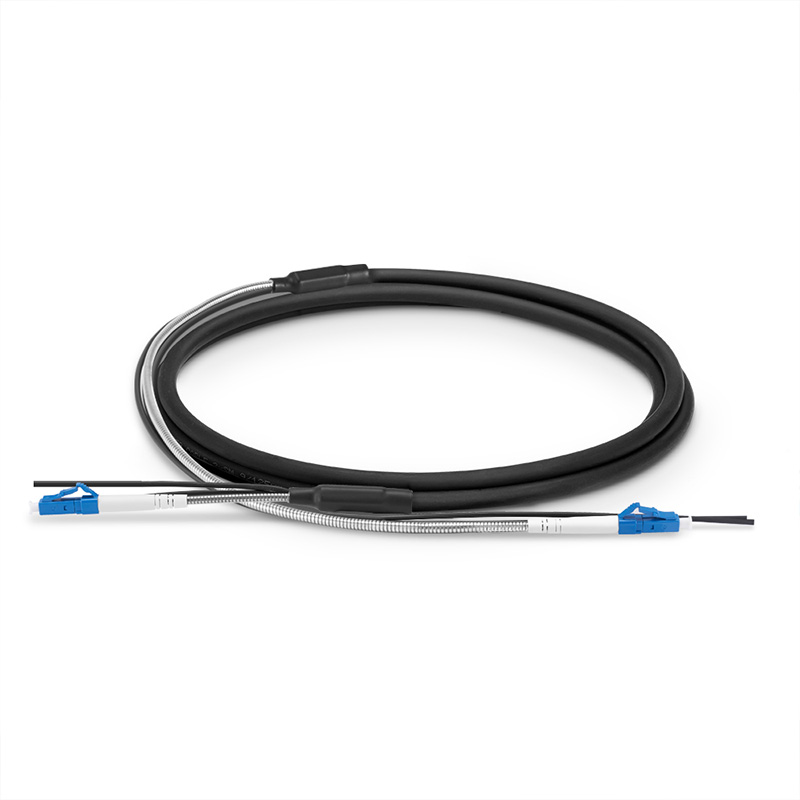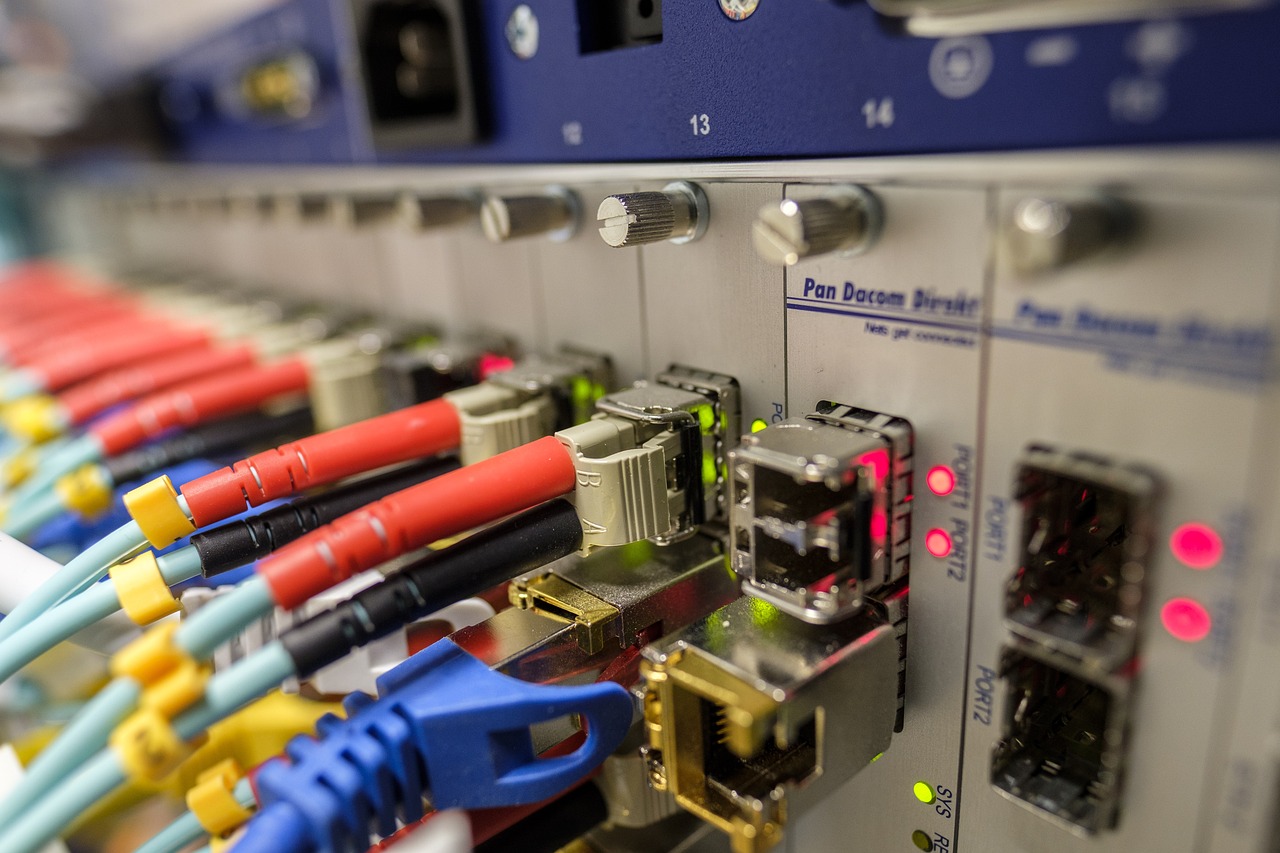Understanding Armored LSZH Fiber to the Antenna (FTTA) Patch Cable for Outdoor Applications

Overview of Fiber Optics and Their Importance in Modern Communication
Fiber optics, a revolutionary technology in modern communication, has transformed the way data is transmitted over long distances. This section provides an overview of fiber optics and its significance in today's communication landscape.
Introduction to Fiber Optics
Fiber optic technology involves the transmission of data through Fiber strands made of glass or plastic. These strands use light pulses to carry information, enabling high-speed data transfer over long distances with minimal signal loss.
Fiber Optic Technology: The technology behind fiber optics involves the use of thin fibers to transmit data using light signals. This method allows for faster and more reliable data transmission compared to traditional copper wires.
How Fiber Optics Revolutionized Communication: Fiber optics have revolutionized communication by significantly enhancing data transfer speeds and bandwidth capacity. This advancement has paved the way for high-definition video streaming, real-time online gaming, and seamless video conferencing.
The Evolution of Fiber Optic Cables
From Basic to Advanced: The Journey of Fiber Cables
The evolution of fiber optic cables has seen a transition from basic single-mode fibers to advanced multi-mode fibers, allowing for greater flexibility in network design and improved transmission capabilities.
Why Fiber is Preferred for High-Speed Data Transmission
Fiber optics are preferred for high-speed data transmission due to their ability to carry large amounts of data over long distances without signal degradation. Unlike traditional copper cables, fiber optics are not susceptible to electromagnetic interference, making them ideal for high-bandwidth applications.
Exploring the Design and Features of Armored LSZH FTTA Patch Cables
In the realm of fiber optics, Patch Cables play a crucial role in establishing connections between different network components. When it comes to outdoor applications, especially in harsh environments, using Armored and LSZH (Low Smoke Zero Halogen) FTTA (Fiber to the Antenna) patch cables becomes essential for ensuring reliable and secure data transmission.
What Makes a Patch Cable Armored?
The Protective Layers of Armored Cables
Armored patch cables are equipped with additional protective layers that shield the internal fibers from external elements such as moisture, physical impact, and extreme temperatures. These layers provide enhanced durability and resistance to environmental stressors, making them suitable for outdoor deployment where standard cables may be vulnerable to damage.
Materials Used in Armored Cable Construction
The construction of armored patch cables involves the use of robust materials such as stainless steel or aluminum interlocking armor. This armor provides a strong outer layer that safeguards the delicate fiber strands within, ensuring uninterrupted signal transmission even in challenging outdoor conditions.
Understanding LSZH in Fiber Cables
The Composition of LSZH Materials
LSZH materials are specifically designed to minimize the release of toxic and corrosive gases during combustion, making them ideal for environments where human safety is a priority. These materials consist of compounds that reduce smoke emission and toxicity levels when exposed to high temperatures, offering an added layer of protection in case of fire incidents.
Safety and Environmental Benefits of LSZH
In addition to prioritizing human safety, LSZH materials contribute to environmental sustainability by reducing air pollution through lower smoke emissions. This eco-friendly characteristic makes LSZH FTTA patch cables an environmentally responsible choice for outdoor installations, aligning with modern initiatives for green technology adoption.
By incorporating armored construction and LSZH materials into FTTA patch cables, organizations can ensure reliable connectivity while upholding safety standards and environmental consciousness in their outdoor communication infrastructure.
The Role of Armored LSZH Patch Cables in Outdoor Applications
As the demand for seamless outdoor connectivity continues to grow, the role of Armored and LSZH patch cables becomes increasingly vital in ensuring reliable data transmission in challenging environments.
Why Outdoor Applications Demand More from Fiber Cables
Outdoor settings present unique challenges for fiber cables, requiring them to withstand a range of environmental stressors while maintaining optimal performance.
Challenges Faced by Cables in Outdoor Settings
In outdoor applications, fiber cables encounter harsh weather conditions, exposure to UV radiation, moisture infiltration, and physical wear and tear. These factors can compromise signal integrity and overall cable functionality, emphasizing the need for robust protective measures.
The Importance of Durability and Resistance
The durability and resistance of fiber cables are paramount in outdoor applications where they are susceptible to damage from external elements. Ensuring that cables can withstand extreme temperatures, heavy rainfall, and mechanical stress is essential for maintaining uninterrupted data flow.
Real-World Applications of Armored LSZH FTTA Patch Cables
The deployment of Armored LSZH FTTA patch cables extends across various industries, playing a critical role in enabling reliable communication solutions in remote and challenging environments.
Examples from Telecommunications and Broadcasting
In the telecommunications sector, these specialized patch cables are utilized to establish robust connections between communication towers and network infrastructure. Similarly, broadcasting companies rely on armored LSZH FTTA patch cables to facilitate high-speed data transfer for live event coverage and remote broadcasting setups.
The Impact on Remote and Harsh Environment Operations
Industries operating in remote or harsh environments such as oil rigs, mining sites, or military installations benefit significantly from the use of armored LSZH FTTA patch cables. These cables provide a lifeline for essential communication networks in locations where standard cabling solutions may be inadequate or prone to failure.
Advantages of Using Armored LSZH Fiber in Harsh Environments
In the realm of outdoor communication infrastructure, the utilization of Armored and LSZH (Low Smoke Zero Halogen) fiber cables offers a multitude of advantages, particularly in harsh environments where reliability and safety are paramount.
Enhanced Safety Features of Armored LSZH Cables
Fire Resistance and Low Smoke Production
Armored LSZH fiber cables are engineered to exhibit exceptional fire resistance, minimizing the risk of combustion-related damage in outdoor settings. The incorporation of LSZH materials ensures that these cables produce minimal smoke when exposed to high temperatures, reducing potential hazards and providing added safety for personnel working in proximity to the cable infrastructure.
Chemical and Water Resistance
The armored construction combined with LSZH properties equips these fiber cables with robust resistance against chemical corrosion and water ingress. This feature is especially crucial in harsh environments where exposure to corrosive substances or inclement weather conditions could compromise the integrity of standard cables. The ability to withstand such environmental challenges enhances the longevity and reliability of armored LSZH fiber cables.
Long-Term Benefits and Reliability
Durability Under Extreme Conditions
One of the primary advantages of utilizing armored LSZH fiber cables lies in their exceptional durability under extreme conditions. These cables are designed to withstand mechanical stress, temperature variations, and environmental factors that would typically degrade standard fiber optic solutions. As a result, organizations can rely on armored LSZH cables to maintain consistent performance even in the harshest outdoor environments.
Cost-Effectiveness Over Time
While the initial investment in armored LSZH fiber cables may be higher than traditional options, their long-term cost-effectiveness becomes evident through reduced maintenance requirements and extended operational lifespans. The enhanced durability and resistance properties contribute to lower replacement frequency, resulting in overall cost savings over the lifespan of the communication infrastructure.
Key Considerations When Choosing FTTA Patch Cables for Outdoor Use
When selecting Fiber to the Antenna (FTTA) patch cables for outdoor applications, several key considerations play a crucial role in ensuring optimal performance and reliability in challenging environments.
Assessing the Specific Needs of Your Application
Before choosing FTTA patch cables for outdoor use, it is essential to assess the specific environmental factors that will impact their performance.
Environmental Factors to Consider
Factors such as temperature variations, exposure to UV radiation, moisture levels, and the presence of corrosive substances should be carefully evaluated. Understanding these environmental variables will guide the selection of patch cables with the appropriate protective features and material composition to withstand outdoor conditions effectively.
Technical Specifications and Compliance
In addition to environmental considerations, technical specifications and compliance standards are vital aspects to consider when choosing FTTA patch cables for outdoor use. Ensuring that the selected cables meet industry standards for data transmission, signal integrity, and environmental resistance is paramount in establishing a reliable outdoor communication infrastructure.
Tips for Selecting the Right Armored LSZH Patch Cable
Choosing the right Armored and LSZH patch cable for outdoor applications requires careful consideration of various factors beyond technical specifications.
Consulting with Experts and Manufacturers
Seeking guidance from experts in fiber optic technology and consulting with reputable manufacturers can provide valuable insights into selecting the most suitable armored LSZH FTTA patch cables for specific outdoor applications. Expert advice can help navigate complex technical requirements and ensure compatibility with existing network infrastructure.
Evaluating Quality and Certifications
Prioritizing quality assurance through certifications such as ISO, UL, or RoHS is essential when selecting armored LSZH FTTA patch cables. These certifications validate the adherence of cables to industry standards for safety, performance, and environmental impact, instilling confidence in their suitability for outdoor deployment.
See Also
A Comprehensive Manual for 12 Core Armored Outdoor Fiber Optic Cables
Locating 1FO SM G657.A2 FastConnect Flat Drop Cable Set for FTTH Usage
Exploring the IP68 Waterproof Field Assembly Rapid Connector for Outdoor FTTH Usage
Becoming Proficient in Fiber Optic Communication: A Manual for Nylon Cable Usage in FTTR
Resolving Issues in Outdoor Fiber Distribution with Model No. NT-16B-1


